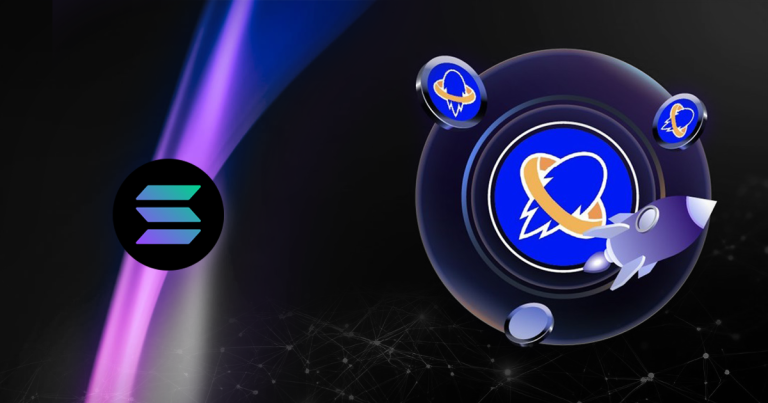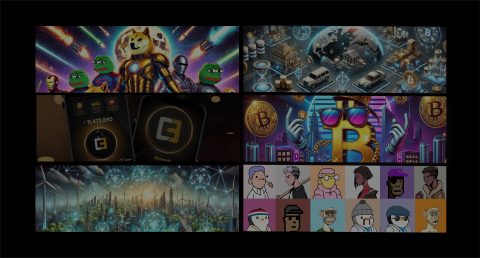TL;DR
Sonic SVM is a next-gen Layer 2 scaling solution built on Solana, engineered for speed, scalability, and sovereignty—especially for Web3 gaming, DeFi, and high-frequency dApps. Powered by the HyperGrid concurrency framework, Sonic SVM delivers up to 30–40x higher throughput while retaining atomic composability and native Solana interoperability.
This case study provides an in-depth exploration of Sonic SVM’s architecture, tokenomics, ecosystem impact, and future roadmap. It highlights how Sonic SVM addresses the scalability and usability challenges faced by decentralized applications (dApps) on Solana, positioning itself as a thought leader in blockchain infrastructure innovation.
Why Sonic SVM?
Solana’s Layer 1 (L1) blockchain is renowned for its high throughput and low latency, but as decentralized gaming and other interactive applications grow in complexity and user base, L1 alone struggles to meet the demands of scalability, customization, and seamless interoperability. Sonic SVM was conceptualized to bridge this gap by providing a dedicated Layer 2 (L2) solution that enables developers to build independent, sovereign grids—customizable, scalable execution environments that run in parallel yet remain synchronized with Solana’s mainnet.
Architectural Overview: The HyperGrid Framework and Sonic SVM Runtime
HyperGrid: The Core Innovation
At the heart of Sonic SVM lies HyperGrid, a concurrent scaling framework that partitions the network into multiple semi-autonomous grids. Each grid is a specialized execution environment optimized for applications such as gaming, DeFi, or AI agents.
- Grid Instances: Each grid processes transactions independently, enabling parallelism.
- HyperGrid Shared State Network (HSSN): Acts as the consensus and state synchronization layer, ensuring atomic composability between grids and Solana’s mainnet.
- ZK Co-Processor: Handles zero-knowledge proofs for fast and secure state transitions.
- BlockStore: Efficiently manages account and program data.
- Concurrent Merkle Tree Generator: Accelerates proof generation and state updates.
This architecture enables true concurrent transaction processing across grids, dramatically increasing throughput while maintaining finality and security anchored to Solana.
Sonic SVM Runtime and EVM Compatibility
Sonic SVM supports two runtime environments:
- Sonic SVM Runtime: Runs native Solana programs.
- Sonic EVM Runtime: Enables Ethereum Virtual Machine (EVM) smart contracts to run on Solana via Sonic, simplifying the migration of Ethereum dApps.
This dual-runtime model opens the door for developers familiar with Ethereum tooling to seamlessly port applications, accelerating ecosystem growth.
Rush ECS Framework: Simplifying Web3 Game Development
Sonic SVM introduces the Rush Entity-Component-System (ECS) framework, a modular game development architecture abstracting key gaming primitives:
This framework empowers developers to rapidly build scalable, composable Web3 games with native blockchain integration.
Tokenomics: The $SONIC Token as Ecosystem Fuel
At the Token Generation Event (TGE), 15% of the supply entered circulation to bootstrap adoption and liquidity.
Token Utility
- Network Fees: $SONIC is used to pay transaction fees within the Sonic SVM ecosystem.
- Staking & Delegation: Validators stake $SONIC to secure the network; delegators earn staking rewards.
The annual percentage yield (APY) for delegators varies depending on the platform and the amount of $SONIC tokens staked.
For instance: Stakely offers an APY of approximately 5.84% .
Crypto.com provides staking rewards of up to 4% APY .
Bit2Me offers an APY of 5.5% . - Governance: Holders participate in on-chain governance via $SONIC or ve$SONIC tokens.
- In-App Currency: Used for payments, asset purchases, and microtransactions within Sonic-powered games and dApps.
Incentive Alignment
Validators, delegators, and ecosystem participants are incentivized to maintain network security and drive adoption, creating a self-sustaining economic model that encourages long-term growth.
Ecosystem Impact: Sonic SVM in Web3 Gaming and Beyond
Gaming Partnerships and Use Cases
Sonic SVM has formed strategic collaborations with leading Web3 game studios such as Fansi, Sugar Kingdom, and Delysium. These partnerships showcase Sonic’s capability to:
- Enable cross-game asset transfers, allowing NFTs and in-game items to move seamlessly between titles.
- Support microtransaction-enabled gameplay, facilitating real-time interactions with low fees and latency.
- Provide developers with tools to build high-frequency, interactive gaming experiences that settle rapidly on Solana mainnet.
Developer Advantages
- EVM-to-SVM Compatibility: Simplifies porting Ethereum dApps to Sonic SVM.
- Rush ECS SDKs: Unity and Unreal Engine integrations reduce onboarding friction for traditional game developers.
- Atomic Composability: Cross-grid communication allows complex multi-application interactions without sacrificing speed.
Beyond Gaming: DeFi, AI, and Payments
Sonic SVM’s architecture supports diverse applications beyond gaming:
- DeFi: Parallel grids can isolate financial protocols to reduce congestion.
- AI Agents: Specialized grids can host decentralized AI computations.
- Payments: Fast, low-cost microtransactions for digital goods and services.
Technical Challenges and Sonic’s Solutions
Roadmap
Cross-Chain and Interoperability Initiatives
- Collaboration with Injective to develop a cross-chain smart agent center enabling automated decentralized trading across blockchains.
- Planned launch of interchain protocols to facilitate asset transfers between Solana, Bitcoin, and other ecosystems by late 2025.
Future Innovations
- Introduction of on-chain reputation systems for gamers and developers in 2026.
- Expansion of Sonic SVM to support diverse Web3 applications beyond gaming.
Comparative Analysis
Sonic SVM’s architecture uniquely balances the trade-offs of scalability, security, and decentralization by leveraging Solana’s base layer security while enabling application-specific customization and concurrency.
Thought Leadership and Strategic Positioning
Sonic SVM exemplifies a forward-thinking approach to blockchain scalability, prioritizing:
- Sovereignty: Allowing applications to run in isolated, customizable grids.
- Interoperability: Maintaining atomic composability with Solana and enabling cross-chain asset movements.
- Developer-Centric Design: Providing tools and runtimes that lower barriers for both Web3-native and traditional developers.
By pioneering the first atomic SVM Layer 2 on Solana, Sonic SVM sets a new standard for blockchain infrastructure, particularly in the rapidly evolving Web3 gaming landscape.
Closing Thought
As Web3 adoption accelerates, Sonic SVM’s ability to deliver sovereign, scalable, and interoperable blockchain environments will be critical to unlocking new user experiences and economic models. If you’re building the future, Sonic might just be the grid you need.
Appendices
Appendix A: HyperGrid Architecture Diagram
Appendix B: $SONIC Token Distribution
References
- Beosin Analysis on Sonic SVM Architecture and Gaming Framework
- Sonic SVM Official Tokenomics and Roadmap Blog
- Gate.io Sonic Overview and Technical Deep Dive
- Panewslab and Aicoin Research Reports
Note: This case study synthesizes publicly available information and technical documentation as of April 2025. It aims to provide a comprehensive, expert-level analysis of Sonic SVM’s technology, economics, and ecosystem impact. It does not constitute financial advice.





